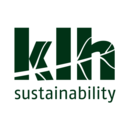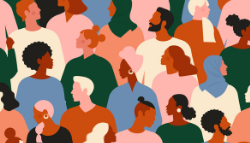Creating more socially just and diverse cities
Contents |
[edit] Introduction
People experience the built environment differently according to who they are. Design, planning and management decisions can enhance or restrict a sense of belonging and can add or remove real or imagined barriers between people and communities. Inclusive and cohesive communities are created by acknowledging and responding to a complex a mix of social, cultural and economic needs surrounding race, faith, class, gender, income, age and much more.
[edit] Racism in society
The Black Lives Matters movement has brought attention to the uncomfortable truth that racism is still a prominent part of our modern society and is deeply ingrained across many industries. The built environment sector is no exception.
The design teams tasked with creating our internal and external environments often lack the diversity that characterises the communities they design for. London is identified as the most ethnically diverse region in England and Wales in the 2011 census, with 40.2% of its residents identifying as either Asian, Black, Mixed or Other ethnic groups.
Recent AJ100 findings show a large discrepancy between the census data and the composition of the largest UK design practices (mostly London based) in which only 11% of architects are from BAME backgrounds. The implications of this disconnect was highlighted recently when, out of the 110 architecture firms selected for the 2018 Southwark Council’s new architectural framework, not a single one was led by a black architect, even though 25% of the borough’s population is black and 46% is non-white.
[edit] The role of design in diversity
Design teams are not big enough to represent everyone that they design for in equal measure, but diversity within the industry helps shape a work environment with space for critical interrogation. Inequality will continue to be designed into our buildings and public spaces if diversity is not invited into design teams, and will result in reduced opportunities for many members of our communities.
This is highlighted by Dr Bridget Snaith’s research that focussed on the under-representation of ethnic minorities as park users in the UK. A core conclusion was that design teams often fail to recognise that their own spatial practices and preferences of the purpose of a park is culturally biased and not universally shared, particularly across ethnic dimensions.
This design bias has contributed to significant disparities within the ethnic make-up of the users of the park compared to the local community. For example, the catchment area of the northern area of the Queen Elizabeth Olympic Park is established as 60% non-white ethnicities, while non-white ethnicities only make up between 22-40% of the park’s users.
The world cannot be sustainable in the absence of equality and diversity. KLH recognises its responsibility to shape change and be an active participant in the transformation to a more just future with equal opportunities for all. Diverse design teams and meaningful community engagement is key to reflect the heterogeneity of needs within the environments we create. However, how can we do that when we ourselves are an all-white practice? How can we justify our commitment as an equal opportunities employer with such a limited ethnic diversity within our team?
KLH hopes to introduce its Equality and Diversity Internship Programme in 2021 to provide opportunities for students from diverse backgrounds to experience what a career in sustainability could look like.
--KLH Sustainability 10:29, 07 Oct 2020 (BST)








